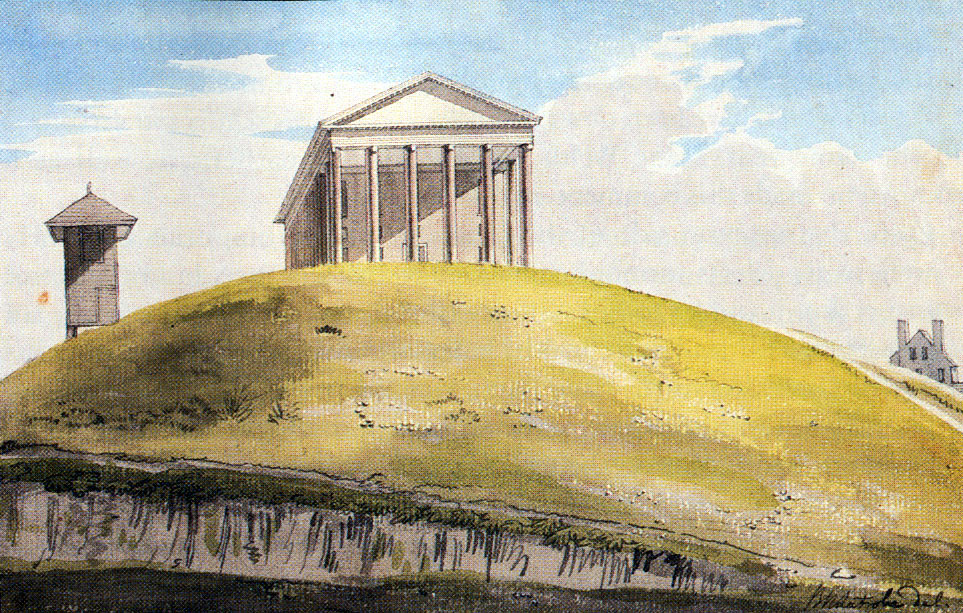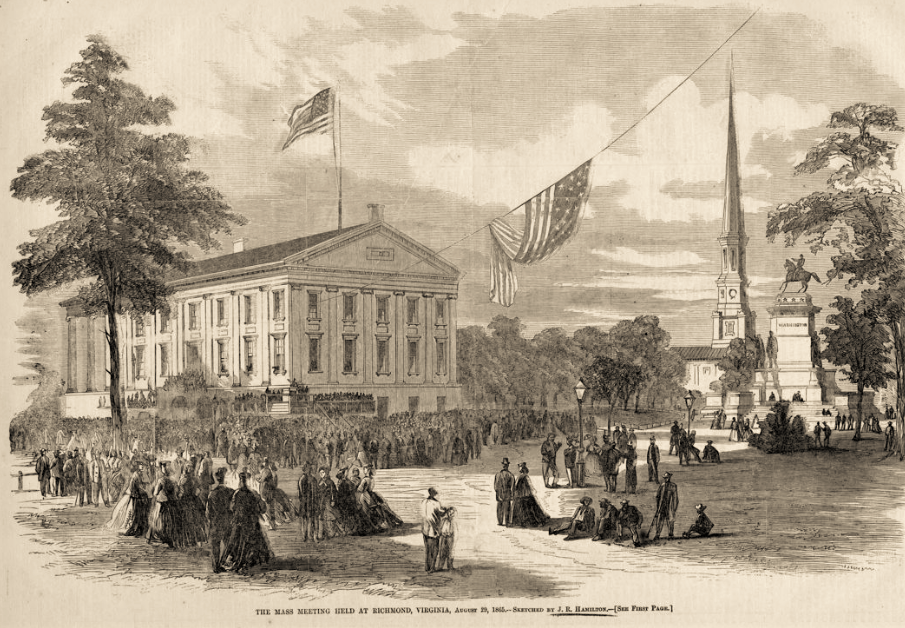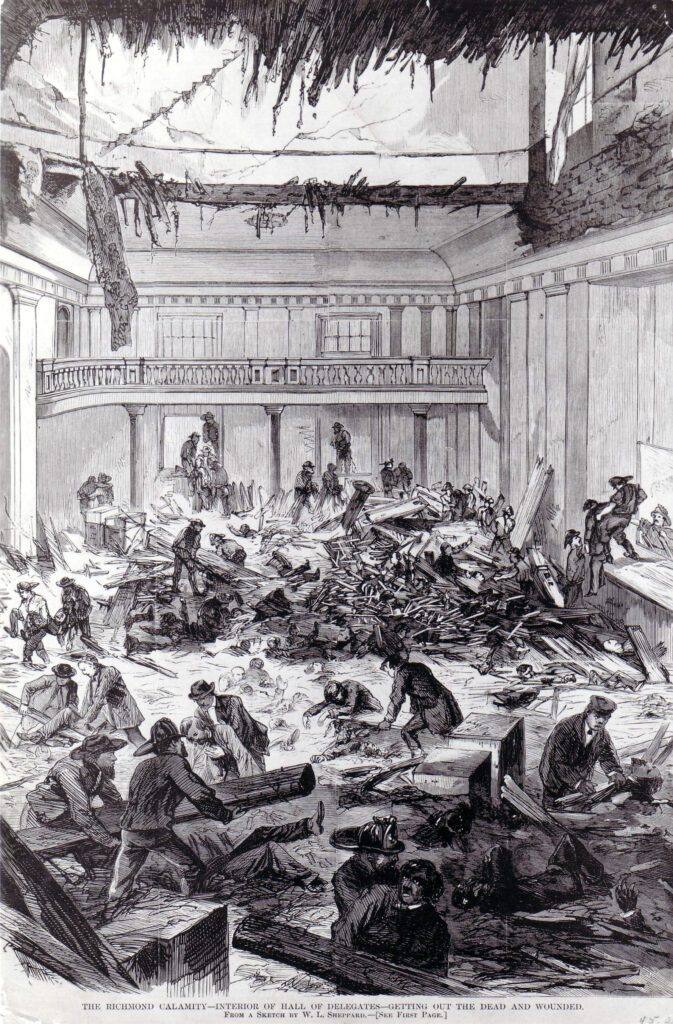The Virginia State Capitol: A Timeline of History
Jefferson’s Vision (1780–1788)

In 1780, Governor Thomas Jefferson and the Virginia General Assembly moved the seat of government from Williamsburg to Richmond. Until a permanent building could be built, the Assembly met in two commercial structures near the riverfront. In 1784, Jefferson traveled to Paris as U.S. Minister to France. The following year, with the help of French architect Charles-Louis Clérisseau, he designed a Roman temple–style Capitol to house all three branches of Virginia’s government. Construction began in 1785 and took 13 years to complete, though the General Assembly occupied the building by the third year.
Virginia’s Capitol began in 1785, became the first Roman temple–style public building in the New World and today is the second-oldest working statehouse in America. Since 1788, it has housed the Virginia General Assembly, the oldest English-speaking legislature still in session in the Western Hemisphere.
Early Years and Landmark Events (1788–1840)
- In December 1791, the General Assembly ratified the Bill of Rights, making the first ten amendments the law of the land.
- The Old Senate Chamber (south end) originally served as a courtroom for Virginia’s highest courts, where lawyers such as Patrick Henry and John Marshall argued cases. Courts met here from 1789 to 1840.
- The Old House Chamber (north end) was used by the House of Delegates from 1788 to 1904. The U.S. federal courts also convened there in the 1790s–1820s. Notable events included:
- The 1807 treason trial of Aaron Burr was presided over by Chief Justice John Marshall.
- The 1829–1830 Constitutional Convention, attended by James Madison, James Monroe, and John Marshall.
The Civil War Era (1861–1865)
Eight days before the Civil War began, the Virginia Constitutional Convention of 1861 voted to remain in the Union. Days later, meeting in the Old House Chamber, delegates reversed course and voted for secession. On April 23, 1861, Robert E. Lee was appointed commander of Virginia’s forces.

From May 1861 until April 1865, Richmond served as the capital of the Confederacy. The Capitol housed both Virginia’s General Assembly and the Confederate Congress. Confederate President Jefferson Davis and Vice President Alexander Stephens were inaugurated on the Capitol grounds in 1862. When Richmond fell in April 1865, much of the city burned, though the Capitol was spared. President Abraham Lincoln visited Capitol Square on April 4, 1865.
Reconstruction and Recovery (1865–1904)

- During Reconstruction, African Americans entered Virginia politics in unprecedented numbers. The Constitutional Convention of 1867–1868 included 24 African American delegates, and at least 92 served in the General Assembly between 1869 and 1890.
- On April 27, 1870, tragedy struck when the overcrowded Virginia Supreme Court of Appeals chamber collapsed into the House of Delegates below. Known as the “Capitol Disaster,” it killed 62 and injured 251. The Court never returned to the Capitol.
- The General Assembly reoccupied the repaired building in October 1870.
Expansion and Modernization (1904–1933)
In 1904, architect John Kevan Peebles designed new wings for the Capitol. The east wing housed the House of Delegates and the west wing the Senate. Completed in 1906, these additions remain in use today.
- In 1920, women gained the right to vote.
- The first female delegates, Sara Lee Fain (Norfolk) and Helen Timmons Henderson (Buchanan and Russell Counties), were elected in 1924.
- In 1933, seven women served as delegates to the Virginia Constitutional Convention, which repealed Prohibition during its one-day meeting in the Old House Chamber.
Civil Rights and Social Change (1933–1990)
- Eva F. Scott became the first woman elected to the Senate of Virginia in 1980.
- In January 1990, the Capitol hosted the inauguration of Lawrence Douglas Wilder, the nation’s first elected African American governor. On the same day, Mary Sue Terry began her second term as Virginia’s first woman Attorney General.
Preservation and Rededication (1990–Present)
The Capitol has continued to serve as a place of governance and remembrance, where citizens have paid respects to leaders such as Chief Justice Leroy R. Hassell.
A major restoration and expansion was completed in 2007, after which the Capitol was rededicated. It remains a National Historic Landmark and is listed on both the Virginia Landmarks Register and the National Register of Historic Places.
Every four years, with the exception of 1864 and 1868, Virginia’s Electoral College has met in the Capitol to certify presidential votes.




